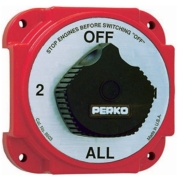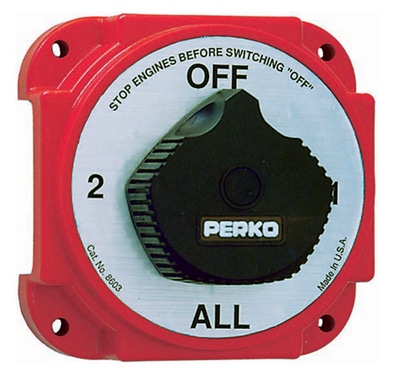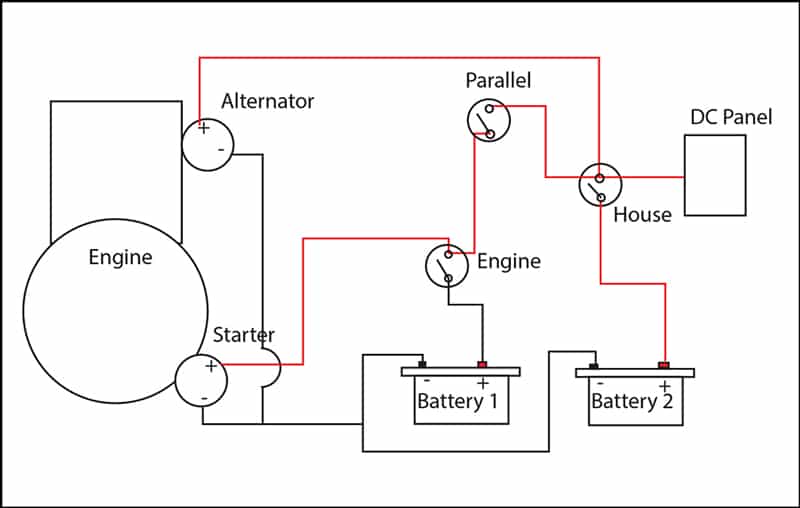Sailboat Engine and House Systems
Perhaps the most important use of DC power on a vessel is for starting the engine. Considerable power is needed for this task and if the engine does not start immediately, you will drain even more energy from the battery.
Thus, it is prudent to always assign one “isolated” battery or bank of batteries for the sole purpose of starting the engine and assign another battery or bank of batteries to “the house”. “The house” is all the other systems and creature comfort devices such as the stereo and refrigerator needing electrons for themselves. In this manner, you always have enough battery power to start the engine even after running the stereo, refrigerator, lights, windlass, and all the other energy-sucking devices all day and night.
A variety of switches are available for this purpose. One of the most common has four positions:
- Off
- Battery 1
- Battery 2
- Both
Battery Switches
The system is usually cleverly set up so that once the engine is started, both the engine battery and house battery systems are automatically charged.
This allows flexibility in distributing your DC battery power. Often Battery 1 is designated as the battery for starting the engine and Battery 2 for all other purposes (house). The occasion for using “Both” occurs if the engine does not start immediately from Battery 1. By using both battery banks, you may be able to get the engine started.
In the event of an electrical fire, you should immediately turn the battery switches to the off position as quickly as possible.









